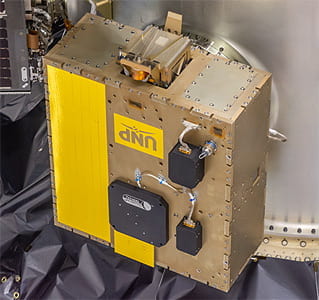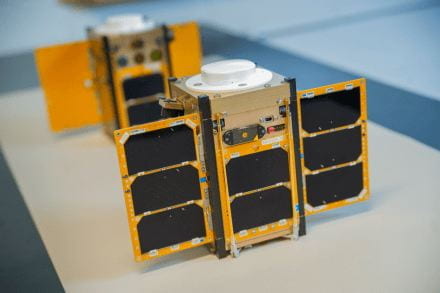The PROX-1 mission involves a large 9U cubesat produced by Professor Glenn Lightsey’s team at GTRI in the summer of 2019.
Craft Overview:
PROX-1 was tasked with deploying a separate, smaller cubesat from within, LightSail 2. LightSail 2 is a 3U cubesat which was a solar sail demonstration mission developed in part by the California Polytechnic State University. PROX-1’s mission was to orbit in close proximity of LightSail 2 and acquire images of its orbit.
Results of the Mission:
The mission is currently a success. PROX-1 is still in orbit and is imaging LightSail.
Deployment:
PROX-1 was successfully launched from Falcon Heavy on June 25, 2019 from Kennedy Space Center in Cape Canaveral, Florida. This was the third launch of the SpaceX Falcon Heavy rocket.
Sources and Additional Information:
- https://space.skyrocket.de/doc_sdat/prox-1.htm
- https://ae.gatech.edu/news/2017/05/prox-1-launch-has-launched
- https://ae.gatech.edu/news/2019/06/aes-prox-1- satellite-launches-kennedy-space-center
- https://www.n2yo.com/satellite/?s=44339
| Acronym | Prox-1 |
| Full Name | Prox-1 (Nanosat 7) |
| Size | 9U |
| Status | Active |
| Launch Date | June 25, 2019 |
| NORAD ID | 44339 |
| Downlink Frequency | 437.xxx MHz |
| Principal Investigator | Glenn Lightsey |



